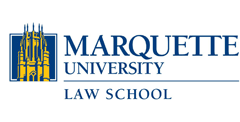The Semicommons and Wisconsin Water Quality
Document Type
Article
Publication Date
2018
Publication Information
David A. Strifling, The Semicommons and Wisconsin Water Quality, 22 Marq. Intell. Prop. L. Rev. 125 (2018)
Source Publication
22 Marquette Intellectual Property Law Review 125 (2018)
Abstract
From the Great Lakes to pristine northern streams, Wisconsin boasts a plentiful and valuable array of water resources. Yet water stress analyses show that this natural capital is deeply threatened in a variety of ways. The pressure results primarily from human activity, ranging from general overuse to colonization by anthropogenically introduced non-native species. Some of the greatest water quality problems, however, are caused by land use practices that lead to polluted runoff from farm fields and urban settings. The onset of climate change has the potential to further exacerbate all of this. These issues, coupled with the failure of existing law to effectively address them, confront regulators and policy makers with difficult and novel questions. As a result, the next century will demand innovative approaches to preserve the quality and quantity of Wisconsin’s water resources for both public and private purposes.
The opening question is basic: Who bears responsibility to address these emerging problems? As an initial matter, under both statutory and common law, it is the state. Federal and state environmental laws vest it with that authority, to the extent of their coverage. The public trust doctrine, long established in our courts, likewise charges the state with protecting water resources for current and future generations of Wisconsin citizens to use for navigation, fishing, hunting, recreation, and scenic beauty. But the scope of the environmental laws is limited, and recent developments in the Wisconsin Legislature and court system have further curtailed the state’s power. For example, the Wisconsin Supreme Court clarified that the public trust doctrine does not apply to land use practices, thereby limiting its usefulness as a water quality protection tool.
One approach to this dilemma is to recognize that federal and state government regulators, acting alone under current law, can no longer fully protect water quality. New laws that fill the gap seem unlikely, meaning that responsible engagement by local governments and private entities will be essential.
Professor Henry Smith has already proposed that the law should treat water much like intellectual property rights—as a “semicommons.” Smith argues that exclusionary governance regimes are a poor fit for “fluid resources” and instead calls for hybrid systems that combine private and common elements of property. Smith’s theory—at least as he has expressed it to date—relates primarily to private rights to use water under various legal systems currently in place. But a broader conceptualization is also useful. If private entities have a right to use water, they should also share a corresponding responsibility to maintain the resource. Water quality is important for public and private uses alike. This article will explore whether the semicommons approach could be expanded to justify a more inclusive approach to responsibility for water quality concerns in addition to private use rights. Innovative proposals along those lines could include involvement by local governments, including cities and counties; voluntary programs; and even private sector involvement in water quality preservation through increased grant or cost-sharing efforts, public educational campaigns, limited public-private partnerships, and other mechanisms. To be sure, this private role must come with safeguards that protect the resource and simultaneously encourage broad participation.
Repository Citation
Strifling, David A., "The Semicommons and Wisconsin Water Quality" (2018). Faculty Publications. 698.
https://scholarship.law.marquette.edu/facpub/698
